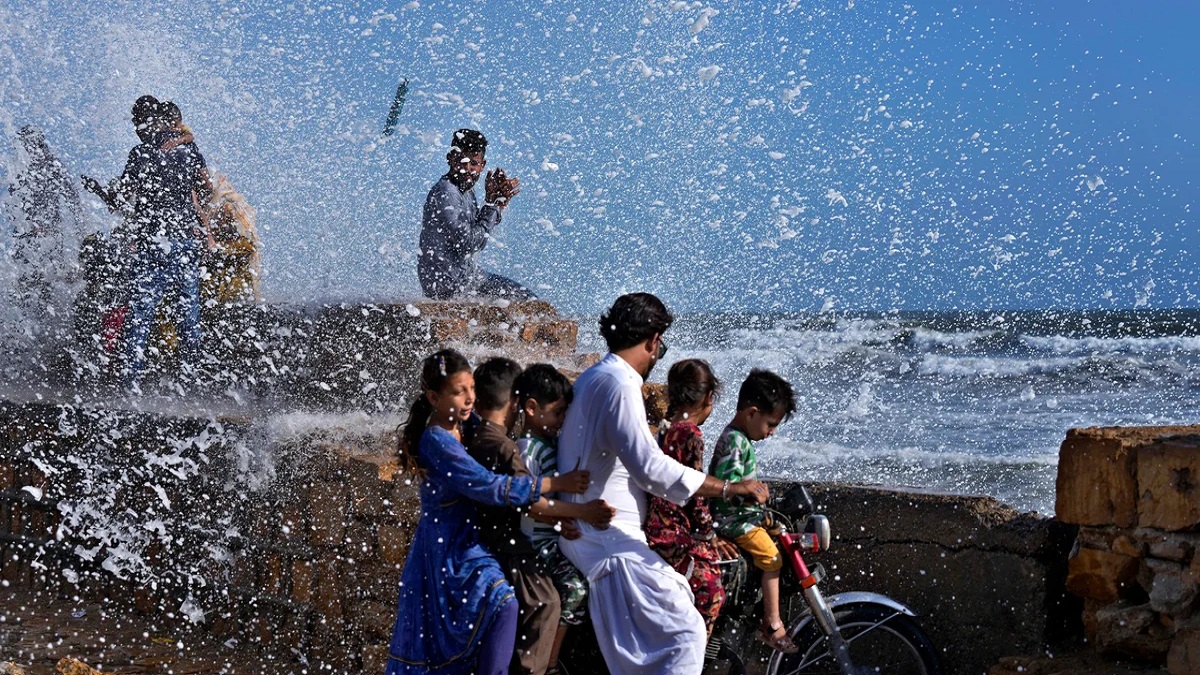On Monday, Cyclone Biparjoy was reported to be approximately 600 kilometres south of Karachi, according to the Pakistan Meteorological Department (PMD). The alert released by the PMD described Biparjoy as an Extremely Severe Cyclonic Storm (ESCS) that has moved northward over the east-central Arabian Sea in the past 12 hours.
The alert details maximum sustained surface winds of 160-180 km/h, gusting up to 200 km/h around the cyclone’s centre. The sea conditions are described as being exceptional, with wave heights reaching 35-40 feet. The favourable environmental conditions including sea surface temperatures of 30-31°C, low vertical wind shear, and upper-level divergence are reportedly helping the cyclone maintain its intensity.
The PMD forecasts Cyclone Biparjoy to track further northward until the morning of June 14, before curving northeastward to make landfall between Keti Bandar (Southeast Sindh) and the Indian Gujarat coast on the afternoon of June 15 as a Very Severe Cyclonic Storm (VSCS).
The National Disaster Management Authority (NDMA), in a tweet, encouraged citizens to remain vigilant, acknowledging the cyclone’s potential impact and ongoing development of the weather system. They also cautioned against entering the open sea until the cyclone has passed, due to potentially dangerous conditions, and requested citizens to maintain a safe distance from shorelines.
In preparation for the anticipated impact of the cyclone Biparjoy on June 13, thousands of residents in coastal villages near Keti Bandar have been evacuated. The Sindh government estimates that around 60,000 people in coastal districts, including Badin, Sujawal, and Thatta, have been affected.
Evacuees are being relocated to areas such as Bhagan, approximately 35 km from Keti Bandar, where the district government has set up camps. Some residents are also considering relocating to other cities like Gharo or Karachi due to the challenging conditions at the camps.
Read More: UN lists Pakistan among 23 countries facing drought emergencies
Chief Minister Sindh, Syed Murad Ali Shah, visited the coastal district and instructed local administrations to make all necessary preparations for the residents’ safety. The Chief Minister also conducted an aerial survey of the coastal districts of Sajawal, Thatta, and Badin, to assess the situation.
Recognizing the potential damage from high-speed winds, especially to weak structures, he emphasized the need for proactive evacuation measures in areas under threat, like Thatta, Sajawal, and Badin. He also noted the potential for a 4 to 5-meter surge in sea levels due to the storm and the subsequent risk of coastal flooding.
Adviser to Chief Minister of Sindh, Murtaza Wahab Siddiqui, confirmed that the health department, PDMA, and local administration have been directed to ensure all facilities are prepared in case of an emergency.



























